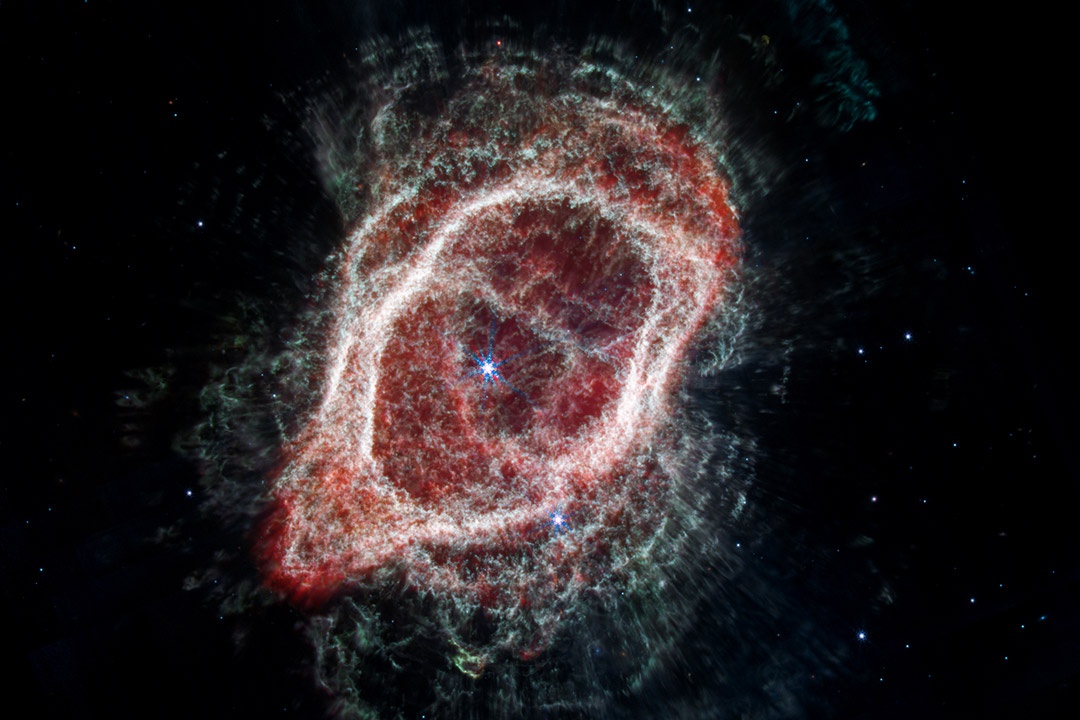I’ve lost count of the number of times I have seen the Ring Nebula. It’s a favourite amongst stargazers around the globe and is surely one of the most well known objects in the night sky. The remains of a Sun-like star, its outer layers have drifted out into space leaving behind a the stellar corpse, a white dwarf. It looks like a giant smoke ring in the sky but what is its true shape? A team of astronomers have mapped carbon monoxide that surrounds the nebula and built a 3D model to reveal its shape.
Astronomers Reveal the 3D Structure of the Ring Nebula


